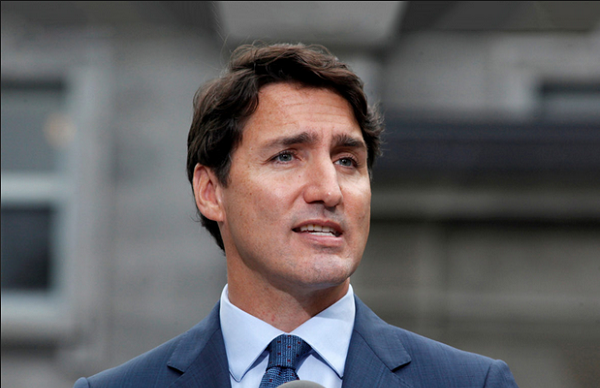Banks expect mortgage delinquencies to continue trending upwards as homeowners face mortgage renewals in 2025 and 2026
The mortgage crisis has hit Toronto homeowners hard. Household debt is near record levels and unemployment is inching upward, creating a precarious environment for over-leveraged homeowners.
Already, some are losing their homes. Mortgage delinquencies and defaults are expected to continue trending upwards as homeowners face mortgage renewals in 2025 and 2026. Canada’s banking regulator recently named mortgage renewal as one of the top financial risks facing the country. And the six major banks are bracing for more defaults, setting aside $4.36 billion in provisions for credit losses in the second quarter of 2024 — an increase of $1.6 billion from the same time last year.
While the crisis will be devastating for homeowners facing financial hardship, the fallout won’t end there. As more homeowners default, the banks will be forced to put more capital aside to cover bad loans, creating the risk of shock to the lending system.
Worst case, it will force banks and lenders into a credit crunch — a decline in lending activity brought on by a sudden shortage of funds, economists say. Canada already has the third-highest household debt in the world and as it becomes harder for people to access credit from the banks, the economy could slow — possibly even leading to a recession, according to some economists. Businesses will cut back on operations and trim their workforce while households spend less, unable to borrow more to make ends meet.
“The train wreck might happen in 2026, however, I think the train heading for the wreck has already left the station,” said David Rosenberg, founder and president of Rosenberg Research & Associates, an economic research firm.
“We have unprecedented debt in the household sector bumping against interest rates rising to levels not seen in 23 years. What that triggers, and there’s no turning back from, is a delinquency cycle and credit crunch. That’s what’s staring us in the face right now.”
The first dominoes fall
Olga Antonova is already thinking about how her children’s lives will change when her mortgage comes up for renewal in 2025.
“We’ll have to cut down on things for the family,” said Antonova, a mother of two who lives in the High Park neighbourhood in Toronto. “We’ll take the kids out less to see movies, or not purchase new things; buy second-hand. We’ll cut back on travel, and we’ll have to become more creative with activities we do in the city to spend less.”
She purchased her semi-detached home in 2012 with her partner, and has never paid more than 3.1 per cent interest on her mortgage, which is the rate she had when they bought the house. Now, her upcoming renewal is “always in the back of my mind,” Antonova said.
Many conversations like these are happening within Toronto households facing renewal over the next two years. For some, cutting spending won’t be enough to keep their homes.
Sean Mayers, a realtor with Century 21 Regal Realty brokerage in Toronto, said some of his clients have decided to sell their homes before their mortgage renewal date arrives, knowing they won’t be able to afford payments once the new rates come into effect. It’s the homeowners who bought during the pandemic real estate frenzy from 2020 to 2022 who are in real trouble, he said.
“In the last 15 years, I’ve never seen the market like this. I’ve never seen interest rates reach the peak, forcing people to sell their home,” said Mayers.
It’s not easy for sellers to off-load their properties either, as Toronto real estate sales are down 16 per cent year over year, with condo sales alone down a staggering 28 per cent. If the property doesn’t sell, that can lead to missed mortgage payments, and worse, possibly even foreclosures.
Mortgage renewals are ‘top risk’
Despite the huge jump in rates in just a year and a half, the total number of mortgages in arrears is still sitting at a lower level than it was before the pandemic, said Tony Stillo, director of Canada Economics at Oxford Economics.
According to the Canadian Bankers Association, mortgages in arrears — defined as those with payments that are three or more months late — are currently sitting at 0.18 per cent in Canada. During the 2008 global financial crisis, the level reached 0.45 per cent, and in the mid-‘80s before the recession it was close to one per cent, Stillo said.
“We project mortgages in arrears will reach 0.30 per cent,” he said. “It will increase but it will be manageable.”
Rosenberg disagrees, noting it’s not the number of mortgages in arrears that matters but the trend of the data, which is heading in the wrong direction.
”(Mortgages in arrears) are at their highest level since summer 2021, and up 23 per cent year over year,” he added.
In Ontario, the total mortgage balance reaching “severe delinquency” exceeded $1 billion for the first time in the first quarter of 2024 — that’s double the level recorded before the pandemic, according to a June report by credit reporting agency Equifax. Even though mortgages in arrears sit at 0.13 per cent in the province, the high cost of housing in Ontario means homeowners are saddled with sizable mortgages, resulting in a higher value of the outstanding debt.
Households struggling with mortgage renewals and payments have caught the attention of the Ontario Superintendent of Financial Institutions (OSFI), which has flagged mortgage renewals as a top risk for the year ahead. The agency said as of May 2024 around 73 per cent of mortgages are set to renew by the end of 2026 — around 4.3 million mortgages. Many of these homeowners could confront a potential “payment shock,” which will be most significant for homeowners who took out mortgages in 2020 to 2022.
“We expect payment increases to lead to a higher incidence of residential mortgage loans falling into arrears or defaults,” OSFI said in its May
The mortgage holders who are most at risk are those with variable-rate fixed-payment mortgages, where the interest rate adjusts but the monthly payments stay the same, resulting in a growing amortization period — the length of time it takes to pay off the mortgage. This unusual situation has left some homeowners with “forever mortgages” that have negative amortizations — when monthly payments can no longer cover interest, resulting in a growing rather than shrinking balance owing.
OSFI has raised a red flag on these mortgages, which must return to their original contractual amortization period upon renewal, leading to “a significant payment shock,” OSFI said, adding this mortgage type makes up about 15 per cent of outstanding mortgages in Canada.
Recession fears growing
“In a worst-case scenario we have a bad recession,” said Rosenberg. “Not just in terms of magnitude but also duration.”
Already many indicators point toward hard times for Canadian households, he said, as severe household debt burdens thousands who shore up most of their wealth in overvalued properties.
“Credit conditions have been far too easy for far too long, leading to a troublesome debt load in Canada,” Rosenberg said. “We have a debt-to-income ratio that’s flirting near 170 per cent — that’s 30 percentage points higher than it was in the U.S. back in the mid- to late-2000s.”
According to Desjardins, Canada has the third-highest household debt in the world compared with other advanced economies, falling behind Switzerland and Australia.
In May, consumer bankruptcies were up 11 per cent over the past year and proposals for bankruptcy have been “trending upwards for some time now,” said Pedro Antunes, chief economist at the Conference Board of Canada. “Household spending on a per-person basis is very weak and in line with the declines seen in 1990 and 1991,” he added.
The country’s biggest banks are continuing to put aside more funds in preparation for a wave of Canadian loan defaults. In the second quarter, CIBC put aside $514 million in provisions for credit losses, an increase of 17 per cent year over year. TD has stashed away $1.07 billion and RBC beefed up its provisions to $920 million — greater than the $892 million analysts expected the bank to set aside for possible defaults.
This could lead to banks reducing credit availability as a delinquency cycle will propel banks to have more loan loss provisions, cutting into their earnings, Rosenberg said. It will turn into a credit crunch, which limits the flow of money in the economy, making it harder for consumers to receive loans from the banks. Consumer spending and confidence drops, leading to further weakness in the real estate market, as sales continue to lower and property values plummet.
Avoiding doomsday
While there are cracks in the financial system, a widespread banking crisis is highly unlikely, experts say, as the major banks are well capitalized, meaning they will weather the storm of mortgage defaults and delinquencies.
“Chartered banks have been prudent in setting aside sizable loan-loss contingencies,” Antunes said. “There is a fair amount of prudence by the banks here.”
So far, there has been a soft landing — an economic slowdown without a recession, he said, adding that while financial institutions remain robust there is still uncertainty in the economy in terms of employment, household debt, and consumer and business bankruptcies, which are trending upwards.
“We set expectations for (federally regulated financial institutions) to have adequate provisions and capital, to offset the increased credit risk, as well as to promote early intervention (before renewal) with borrowers vulnerable to payment increases,” an OSFI spokesperson said in an email statement, noting the stress test also ensures homeowners are able to accommodate higher rates.
“In light of the above measures, increased concern for consumers and institutions is unwarranted. Canada’s financial system remains resilient,” the statement said.
After a very long wait, the Bank of Canada began its rate-cutting cycle in June, and while economists forecast the key interest rate drop will be gradual, it helps prevent a surge of defaults. Because of that, Stillo says a credit crunch can be avoided.
As mortgage renewals continue to play out, OSFI will monitor the situation, he said, though they will view it as a “persistent” until at least 2026.
“It will take some years to see how this all plays out in the economy,” he said. “And at the end of the day, it’s high-income earners who are sitting on a mountain of savings, not low- to medium-income households. They’re the one’s who will suffer the most.”
This article was first reported by The Star













